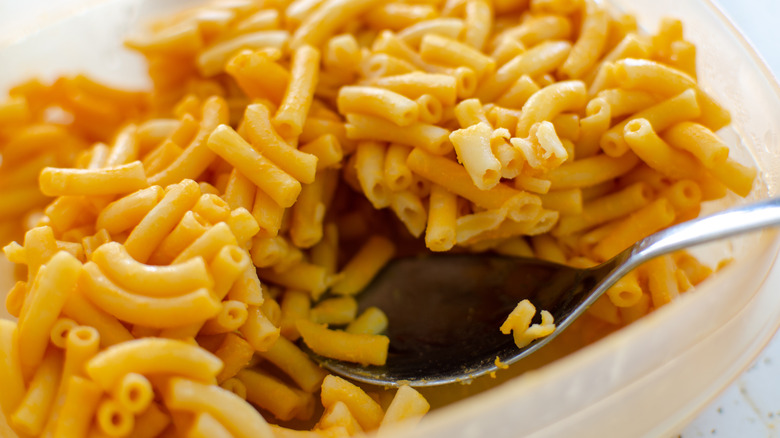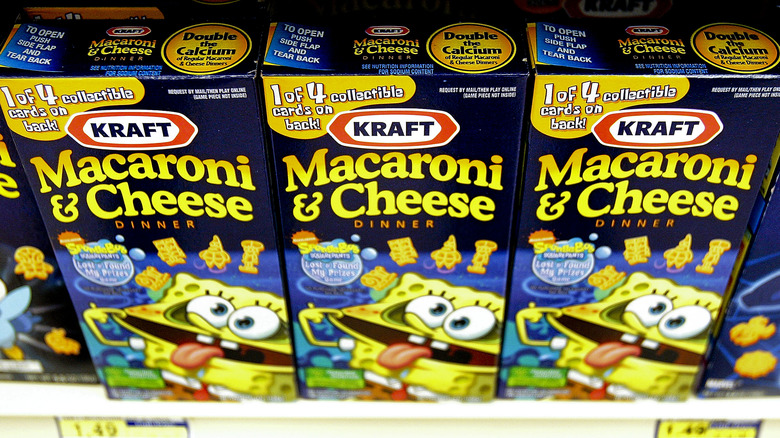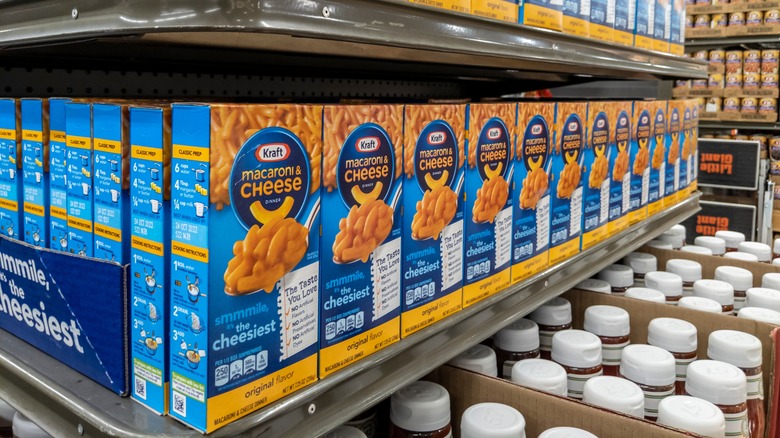How Kraft Mac & Cheese Helped Change The Landscape For Packaged Foods
If you live in the U.S., chances are you've eaten boxed mac and cheese more than once. Maybe it's not technically illegal to be an American and be unfamiliar with the stuff, but it kind of feels like it should be. And while there are plenty of ways to jazz up your easy mac (pro tip: try cracking an egg in there), the basic form of the ubiquitous staple is an indelible part of many of our childhoods.
Surprisingly, it wasn't always this way. Once upon a time, the idea of a shelf-stable cheese that can last up to two years without compromising the flavor would've seemed like a truly bizarre fantasy. One guy changed all that with an insane plan to create a shelf-stable cheese, and in the process changed the packaged foods landscape and launched a massive foods conglomerate with its hands in seemingly everything today. His name? James L. Kraft.
Kraft Mac & Cheese owes it all to science
Even in the 20th century, macaroni and cheese was hardly considered a new dish to Americans. James Hemings, an 18th-century formerly enslaved Black American chef, is credited with adding a uniquely American flair to mac and cheese, a dish he learned to cook in France as Thomas Jefferson's personal cook. Indeed, Hemings served it regularly to Jefferson; unsurprisingly, the third president of the United States also loved the stuff.
Before James L. Kraft decided to make it his mission to bring it to the masses centuries later (and make lots of money in the process), it required a more artisanal, handcrafted feel. Cheese, like other dairy products, had a limited shelf life. But in the 1910s, that changed. A pair of Swiss scientists, Fritz Stettler and Walter Gerber, invented a process for emulsifying emmental cheese with sodium citrate in 1911. But at the same time, Kraft was working on his own version, which involved heating and whisking cheddar with emulsifying salts — a code he finally cracked in 1916. However, there's a reason the Canadian-born Kraft's version ultimately won out and became what we now know as "American" cheese: As Thrillist notes, his was both better and easier to make.
Kraft's creation was similar to what we now know as Kraft singles, and his big customer was the U.S. military. He expanded into products like Velveeta and Cheez Whiz but had yet to embark upon macaroni and cheese — that is, until the 1930s.
Kraft Mac & Cheese took off immediately
In an effort to sell some of their excess processed cheese, in 1937 James L. Kraft launched Kraft Dinners, a line of boxed mac and cheese that could be prepared quickly and serve an entire family. Americans took to it immediately, and Kraft sold eight million boxes in its first year. Shortly thereafter, America entered World War II, and rationing hit consumers where it hurt. But you could get two boxes of what would later be branded as Kraft Mac & Cheese for one ration point, so the stuff absolutely exploded. Americans were already starting to lean into convenience foods, but a mix of timing and demand for Kraft Mac & Cheese accelerated the process.
It was also healthier than a lot of what was generally available, even in comparison to non-shelf-stable cheeses, because processed cheese was automatically pasteurized, eliminating health issues like undulant fever. Pasteurization wasn't required for commercially sold dairy products anywhere in America until Michigan enacted the first statewide law in 1947, but Kraft Mac & Cheese was ahead of the game.
Kraft's processed cheese wasn't the first time a product had been modified towards shelf stability — canning was invented during the Napoleonic Wars — but mac and cheese became an overnight sensation and immediately changed the way Americans ate dinner. Later creations like Swanson's TV dinners, and eventually microwaveable meals, owe a tremendous debt to Kraft's boxed mac and cheese.


